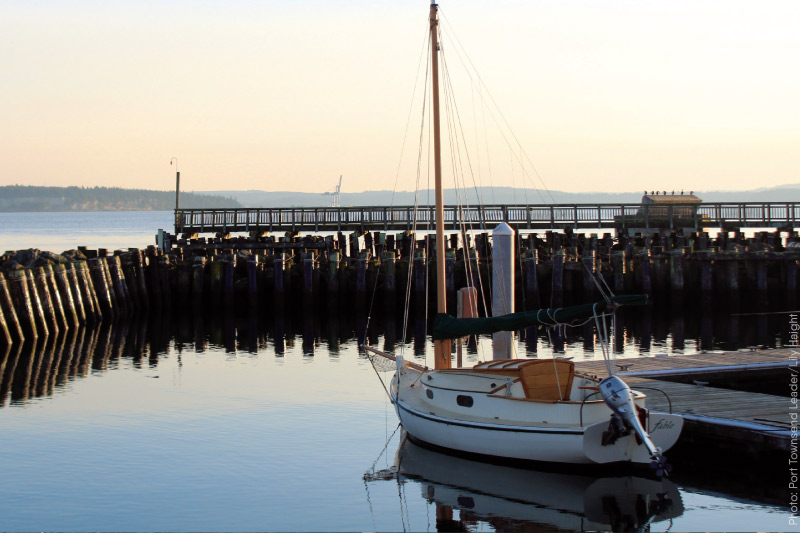 Port Townsend’s Point Hudson jetty was originally constructed in 1934, and although it has undergone intermittent repairs in 1969 and 1996, its 70-plus years protecting the Point Hudson Marina has taken a toll on its pilings, walers, cables, and armoring rock. Plans have been in the works to completely replace both the south and north jetty legs, estimated at about $6.2 million, to save the marina. Without this breakwater/jetty, accessing the marina would be next to impossible.
Port Townsend’s Point Hudson jetty was originally constructed in 1934, and although it has undergone intermittent repairs in 1969 and 1996, its 70-plus years protecting the Point Hudson Marina has taken a toll on its pilings, walers, cables, and armoring rock. Plans have been in the works to completely replace both the south and north jetty legs, estimated at about $6.2 million, to save the marina. Without this breakwater/jetty, accessing the marina would be next to impossible.
The plan was to replace the jetty “in the most efficient, effective, and most cost-effective way,” explains Jim Pivarnik, Interim Port Executive Director. A steel combi-wall was approved, but a group of individuals is now asking for something a little different. Stakeholders would like to see the jetty replaced in-kind, and the replacement project should be studied with a wider lens and possibly include historic status.
Pivarnik is considering all options. “We looked at what other marinas were doing,” he said. Shilshole, Elliott Bay, and other marinas use a combi-wall infrastructure, which “led us down the road to a combi-wall,” Pivarnik explains. Carol Hasse of Port Townsend Sails and her group said it’s too late to “go back to square one.” According to Pivarnik, it has already been permitted and gone out to bid. However, he does admit that the port failed to openly engage with the public regarding the matter at hand. Another question Pivarnik asks himself is, “Do we want to throw that $700,000 that’s already been spent on consulting, design, and permitting away?”
According to Pivarnik, the good news about giving the jetty a historic designation is that permitting would be easier and funds would flow freely from the government, but there are a few cons. The new design would better protect the marina from windstorms that could still force waves into the marina. Engineers tried to build the new design with a combination of rock and steel that would protect the marina better in windstorm scenarios. Because the permitted plan is still currently out of the port’s price range, it’s not expected to commence for another two years, which means there is time to ponder, discuss, reassess, and “see what can be done without spending a lot of money.” Pivarnik concludes his statement with a promise to do a “dispassionate evaluation of the pros and cons.”